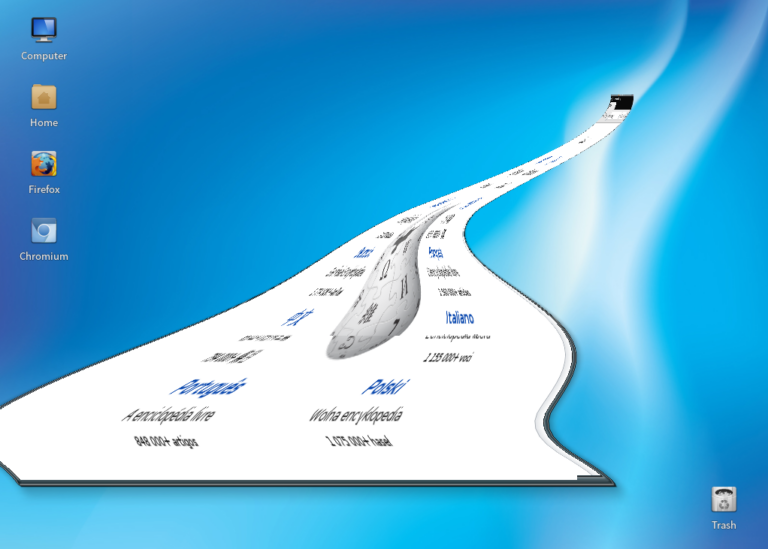The Arch Decision: Evaluating If a Leap From Manjaro to EndeavourOS Is Right for You
Introduction
In the expansive universe of Linux distributions, the choice of which one to use can be overwhelming. Among the galaxies of options, two Arch-based stars have shone increasingly brightly: Manjaro and EndeavourOS. Both are rooted in the Arch Linux ecosystem, yet they cater to different kinds of users and offer unique experiences. If you’re currently a Manjaro user contemplating the switch to EndeavourOS, this article aims to help you make an informed decision.
Background Information
What is Manjaro?
Manjaro is an Arch-based Linux distribution that is designed to be user-friendly and accessible. Known for its ‘Install and Go’ philosophy, Manjaro offers ease of use, making it suitable for Linux newcomers. It comes with a variety of desktop environments like XFCE, KDE, and GNOME, among others. Manjaro also features its own package manager, Pamac, which makes software installation a breeze. Automatic updates and built-in stability checks make it a go-to choice for those who want the power of Arch Linux without its complexities.
What is EndeavourOS?
EndeavourOS is also an Arch-based Linux distribution, but it aims to be closer to vanilla Arch. Targeted at intermediate to advanced users, EndeavourOS offers an almost bare-bones experience with the choice to customize your system as you see fit. While it does come with an installer, it is more manual compared to Manjaro’s Calamares installer. It aims to provide the user with an Arch experience with minimal added features, relying mostly on the Arch User Repository (AUR) and Pacman for package management.
Comparison Criteria
To make an apples-to-apples comparison between Manjaro and EndeavourOS, we’ll evaluate them based on the following criteria:
- Ease of Installation
- Package Management
- Desktop Environments
- System Performance
- Software Availability
- Community Support
- Stability and Updates
Detailed Comparison
Ease of Installation
Manjaro offers an incredibly user-friendly installation process via its Calamares installer. It is mostly automated and requires only minimal user interaction.
EndeavourOS, on the other hand, offers a more hands-on installation process. Though it also offers an installer, it allows for more customization during the setup, which might be more appealing to advanced users but intimidating for beginners.
Package Management
Manjaro uses Pamac for package management, which offers a clean, easy-to-use graphical interface. It also supports AUR, enabling a wide range of software availability.
EndeavourOS sticks closer to Arch roots by using Pacman as its package manager. While it lacks a default graphical interface for package management, it offers a more “Arch-like” experience for those who prefer the command line.
Desktop Environments
Manjaro offers a variety of desktop environments out of the box like XFCE, KDE, and GNOME, all customized for enhanced user experience. This is great for users who want a polished desktop without much tinkering.
EndeavourOS provides a closer-to-vanilla experience of the desktop environments. While it also offers multiple choices, they are not as finely tuned as Manjaro’s, giving users the flexibility to customize their desktops as they wish.
System Performance
Manjaro is optimized for performance but tends to consume more system resources due to the additional features and customized environments.
EndeavourOS, being more bare-bones, generally provides better system performance, especially for older hardware, and gives the user more control over what is installed on their system.
Software Availability
Both distributions have access to the Arch User Repository (AUR), making software availability nearly limitless. However, Manjaro offers a broader range of software in its official repositories, while EndeavourOS relies more on the AUR.
Community Support
Manjaro has a larger community and thus offers more immediate online support through forums and tutorials. EndeavourOS has a smaller but very dedicated community. Support is often more specialized but might take longer to receive.
Stability and Updates
Manjaro offers more stability as it holds back packages for additional testing before releasing them to the stable branch. This is beneficial for users who prioritize a stable system over cutting-edge updates.
EndeavourOS offers a more bleeding-edge experience by releasing packages faster. This could lead to a less stable system but allows users to get new features and updates quicker.
Pros and Cons
Pros of Staying with Manjaro
- User-friendly and accessible
- A wider range of software in official repositories
- More stable due to held-back packages
Pros of Switching to EndeavourOS
- Closer to vanilla Arch experience
- More control over system customization
- Faster updates and access to new features
User Testimonials
John, a software developer, says, “Switching to EndeavourOS was like taking off the training wheels. I didn’t realize how much I enjoyed system customization until I made the switch.”
Emily, a graphic designer, counters, “I tried EndeavourOS, but Manjaro just fits my needs better. It’s stable and I don’t have to spend time tinkering to get things just right.”
Conclusion
Choosing between Manjaro and EndeavourOS boils down to what you need and what you’re comfortable with. If you prefer a system that is ready-to-go with a safety net of added features and stability, Manjaro is your go-to choice. However, if you enjoy diving deep into system customization and getting updates as quickly as possible, EndeavourOS is the way to go.
Choosing a Linux distribution is a personal journey. We encourage you to try both Manjaro and EndeavourOS to see which fits your needs and preferences best. Got any experiences or tips to share? We’d love to hear your thoughts in the comments below.





